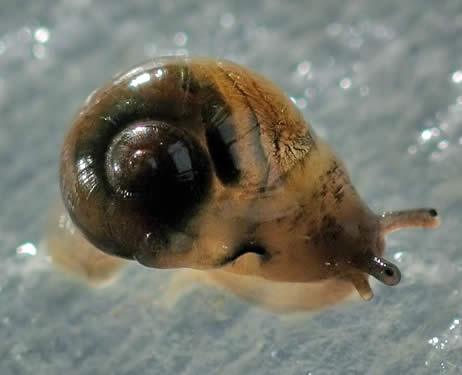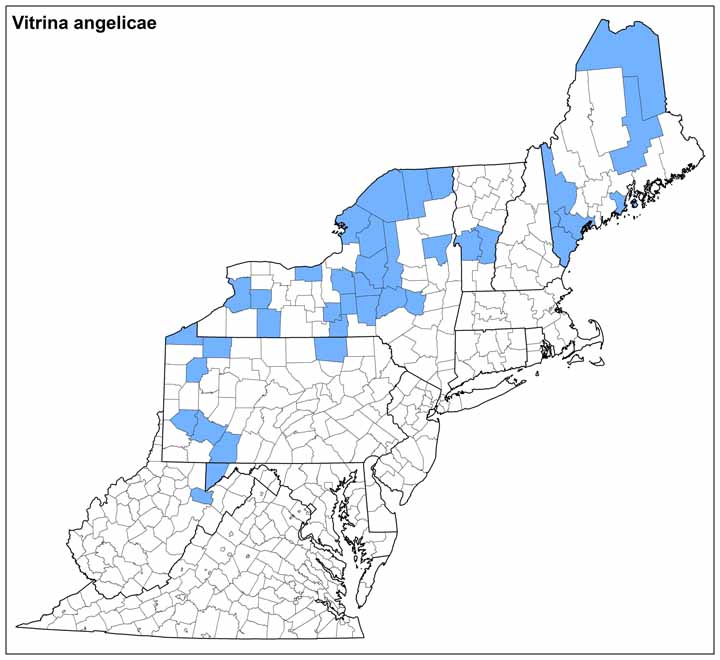Land Snails

Photo(s): © Ron Lutz II
Click photo to enlarge
Vitrina angelicae (Beck, 1837)
Common name: Eastern glass-snailFamily: Vitrinidae
Order: Stylommatophora
Small and fragile, the eastern glass-snail is unusual in its shape and habits. A nearly transparent shell, whose body whorl opens widely, seems barely large enough to cover the snail’s soft body as it withdraws. This snail is often found in damp grassy habitats near wetlands, streams and rivers, sometimes beneath wood, or among rocks. They may be found in apparently dry habitats that are wet during other parts of the year.
The shell of the eastern glass-snail is 6mm wide and 4.5mm tall, described by Gould (in Pilsbry, 1946) as “globose-discoid” with the last whorl “much expanded.” The shell is shiny, thin and fragile, and is clear or pale green. The umbilicus is tiny. This animal is distributed in Europe, Canada, and the northern United States to the Midwest. In Pennsylvania it is found in the north and west (Hubricht, 1985).
The eastern glass-snail seems contrary in its habits—it is a northern species that is only active and breeding late in the year, rather than in the warmer months as most land snails. It is apparently an annual, not found alive in spring and summer. George Clapp reported that this species was among river drift along the Ohio River near Pittsburgh, and large numbers were seen in October and November when the temperature was between 1.7º and 7.2ºC (35º and 45 ºF; (in Pilsbry, 1946). Clapp observed them laying eggs in bunches of six or eight beneath wood debris.
Ken Hotopp, 10/17/05
Range Map (click to enlarge)
 Development of this site was supported by the generous contributions of Pennsylvanians to the Wild Resource Conservation Fund.
Development of this site was supported by the generous contributions of Pennsylvanians to the Wild Resource Conservation Fund.

